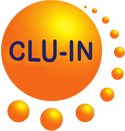Search Result
ENHANCING REMEDIATION IN LOW PERMEABILITY SOILS
Davis, E. ǀ Thirteenth International Conference on Remediation of Chlorinated and Recalcitrant Compounds, 2-6 June, Denver, CO, 19 slides, 2024
Filed Under: Cleanup News
Filed Under: Cleanup News
This presentation discusses the effects of increasing the temperature of thermal remediation technologies, electrical resistance heating, and thermal conductive heating on the recoverability of contaminants. Challenges of remediation in low permeability soils include limitations to injecting and extracting liquids and/or gases to facilitate the treatment or recovery of organic compounds. For many legacy contaminated sites, there can be decades or more between when the contamination occurred and when efforts are undertaken to remediate the site. While migration of contaminants into low permeability soils is slow, the delays between when the contamination occurs and when remediation is undertaken provide ample opportunity for the low permeability soils to become contaminated. Remediation efforts generally attempt to recover or treat the contaminants in much less time. Lower groundwater flow rates in low permeability soils means the contaminants are not flushed out rapidly. While the low permeability limits liquid flow in these soils, they can readily be heated. The presentation includes two case studies where thermal treatments were used to remediate PCE in soil. https://cfpub.epa.gov/si/si_public_record_report.cfm?dirEntryId=362292&Lab=CESER&simplesearch=0&showcriteria=2&sortby=pubDate&timstype=&datebeginpublishedpresented=06/15/2019&searchall=contamination
More information on Point Richmond remediation: https://ngwa.onlinelibrary.wiley.com/doi/abs/10.1111/gwmr.12028
Solvents Recovery Service of New England Superfund site: https://www.srsnesite.com/
Filed Under: Cleanup News
Filed Under: Cleanup News
This presentation discusses the effects of increasing the temperature of thermal remediation technologies, electrical resistance heating, and thermal conductive heating on the recoverability of contaminants. Challenges of remediation in low permeability soils include limitations to injecting and extracting liquids and/or gases to facilitate the treatment or recovery of organic compounds. For many legacy contaminated sites, there can be decades or more between when the contamination occurred and when efforts are undertaken to remediate the site. While migration of contaminants into low permeability soils is slow, the delays between when the contamination occurs and when remediation is undertaken provide ample opportunity for the low permeability soils to become contaminated. Remediation efforts generally attempt to recover or treat the contaminants in much less time. Lower groundwater flow rates in low permeability soils means the contaminants are not flushed out rapidly. While the low permeability limits liquid flow in these soils, they can readily be heated. The presentation includes two case studies where thermal treatments were used to remediate PCE in soil. https://cfpub.epa.gov/si/si_public_record_report.cfm?dirEntryId=362292&L
More information on Point Richmond remediation: https://ngwa.onlinelibrary.wiley.com/doi/abs/10.1111/gwmr.12028
Solvents Recovery Service of New England Superfund site: https://www.srsnesite.com/
The Technology Innovation News Survey welcomes your comments and
suggestions, as well as information about errors for correction. Please
contact Michael Adam of the U.S. EPA Office of Superfund and Emergency Management at adam.michael@epa.gov or (703) 603-9915
with any comments, suggestions, or corrections.
Mention of non-EPA documents, presentations, or papers does not constitute a U.S. EPA endorsement of their contents, only an acknowledgment that they exist and may be relevant to the Technology Innovation News Survey audience.




